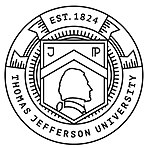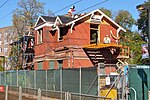Historic RittenhouseTown
German-American historyGermantown, PhiladelphiaHistoric American Buildings Survey in PhiladelphiaHistoric House Museums of the Pennsylvania GermansHistoric districts in Philadelphia ... and 11 more
Historic districts on the National Register of Historic Places in PennsylvaniaHistoric house museums in PhiladelphiaHistory of PhiladelphiaIndustry museums in PennsylvaniaNRHP infobox with nocatNational Historic Landmarks in PennsylvaniaNational Register of Historic Places in PhiladelphiaOpen-air museums in PennsylvaniaPhiladelphia Register of Historic PlacesUse mdy dates from August 2023Wissahickon Valley Park

Historic RittenhouseTown, sometimes referred to as Rittenhouse Historic District, encompasses the remains of an early industrial community which was the site of the first paper mill in British North America. The mill was built in 1690 by William Rittenhouse and his son Nicholas on the north bank of Paper Mill Run (Monoshone Creek) near (and now within) Philadelphia, Pennsylvania. The district, off Lincoln Drive near Wissahickon Avenue in Fairmount Park, includes six of up to forty-five original buildings. RittenhouseTown was listed on the National Register of Historic Places and was designated a National Historic Landmark District on April 27, 1992.
Excerpt from the Wikipedia article Historic RittenhouseTown (License: CC BY-SA 3.0, Authors, Images).Historic RittenhouseTown
West Rittenhouse Street, Philadelphia
Geographical coordinates (GPS) Address Nearby Places Show on map
Geographical coordinates (GPS)
| Latitude | Longitude |
|---|---|
| N 40.0286 ° | E -75.19112 ° |
Address
Historic Rittenhouse Town
West Rittenhouse Street
19144 Philadelphia
Pennsylvania, United States
Open on Google Maps









